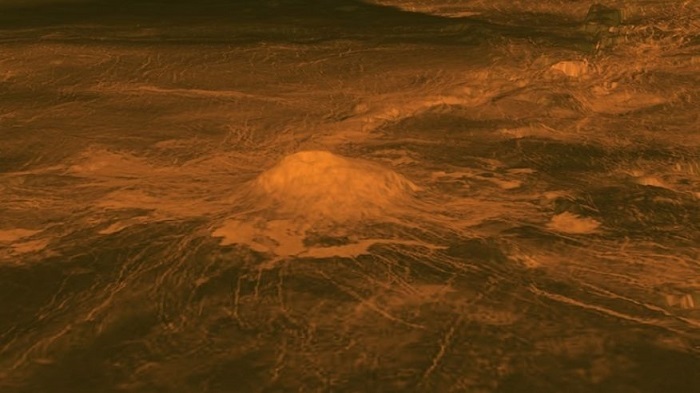Now, a more nuanced look at Idunn Mons suggests that the hotspot observations are consistent with multiple (cooled) lava flows along the volcano`s eastern flank, the new research shows. The researchers behind the new work said the finding suggests that Venus` volcanos were active in the relatively recent past, and may still be active today.
"Venus is a planet which has always been considered Earth`s twin sister," said Piero D`Incecco of the German Aerospace Center and one of the researchers behind the new analysis. "But its cloud cover still hides a lot of secrets."
D`Incecco spoke at a media briefing at the American Astronomical Society Division for Planetary Sciences meeting in Pasadena, California.
Venus Express initially identified the hotspot on Idunn Mons in 2010 using the Visible and Infrared Thermal Imaging Spectrometer (VIRTIS) instrument. Most of Venus` surface appears cool when viewed with VIRTIS, and this is a sign that those regions haven`t changed (geologically speaking) in millions of years. By contrast, the researchers who initially studied the hotspot estimated that the region could be less than 2.5 million years old. Unfortunately, the thick clouds that cover Venus prevented the Venus Express probe from getting a more detailed look at the volcano and the lava flows.
The new analysis of lava flows on Idunn Mons uses radar data collected in the early 1990s by NASA`s Magellan probe. D`Incecco and colleagues built a new numerical model to simulate lava flows on the top of the mountain and the eastern flanks, and compared that model with the Magellan data.
"According to our modeling, the flank lava flows are the ones responsible for this [hot]spot," D`Incecco said. "This is particularly important because this is the first time we can map, with such a high resolution, lava flows from a volcanic structure which is believed to be recently or still active on a terrestrial body other than Earth."
More about:
















































